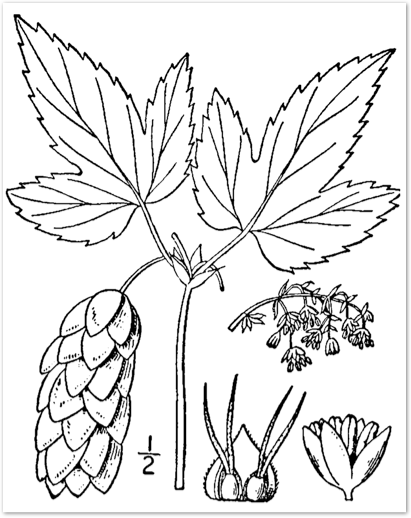
H. lupulus, along with most other species and varieties (there are always exceptions!), are dioecious, meaning there are two separate plants, one with male parts and one with female parts. Some monoecious plants (both sexes on one plant) have been found, although not many. European hops varieties, most being H. lupulus, have been breed to remove this trait.
Male and female plants are indistinguishable until they start showing the reproductive structures. These structure grow out of the nodes (the spot where the branches meet the stem) off of lateral arms at the terminal buds. Females produce strobilies, the commonly seen cone structures, for reproduction. Males produce flowers in long racemes as seen in the picture (Fig. 4). These release pollen that is carried by the wind to hopefully produce offspring. If it were to go as planned (you will see why it usually does not), the female cone will be bestowed with pollen, take it in, and create seeds in the cone.
In cultivation, males are undesirable for two reasons. First, the main product desired from cultivation of H. lupulus is the cone, or strobilies, which is only a feature of female plants. Pollen is the second reason for why males are not desired. If the males are allowed to grow, they will pollenate surrounding females, as stated above. Seeds are not wanted by farmers because it decreases the energy the plant can put into the other more desired traits, such as the desired levels of chemicals, and overall crop yield in the H. lupulus fruit. Yes, the hop is considered a fruit in a botanical sense since it is the reproductive body of the seed plant.
Since seeds are not wanted, most “reproduction” for hops is done commercially is by vegetative reproduction. Parts of existing rootstocks are cut away and chopped up into fragments. These fragments are then planted in the ground and a new hop plant grows from those fragments. Since fields are female, cuts from them will become female as well. Much effort is taken to stop H. lupulus pollen from coming near hop fields.
Males are used in breeding programs to help select for new traits, resistances to diseases, and to create new varieties.
Reproduction
Fig 4
Drawings of the general structure of H. lupulus. Left female cone, right male racemes.